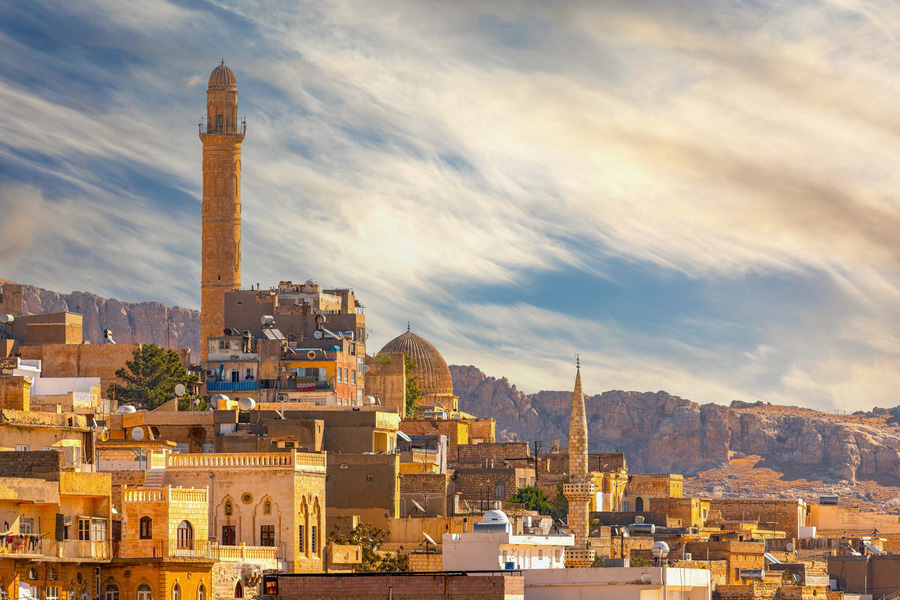Bridged between the Euphrates (Firat) and Tigris (Dicle) rivers, the Southeastern Anatolia Region (Güneydoğu Anadolu Bölgesi) of Turkey (Türkiye) represents one of the major parts of ancient Mesopotamia (Mezopotamya). Visit southeastern Turkey to explore the world’s first known settlements, agriculture and temples of Göbekli Tepe (Göbeklitepe, around 9600 BC), Karaca Dağ and Çayönü (8000 to 6000 BC), marking the earliest steps of human society.
With Mesopotamia meaning “between rivers” in Greek, the first fields of einkorn wheat were planted, and early communities grew into blooming cities and societies in the region. From the Neolithic era to the Iron Age, from the Kingdom of Commagene to the Roman Empire, the Southeastern Anatolia Region has always been a cultural stronghold. Here, science and faith coexisted: Ismail Al-Jazari, one of the pioneers of engineering and robotics, worked in this region during the 12th century.
Visit the Southeastern Anatolia Region for a voyage through the history of humanity. Visitors can explore Mount Nemrut’s colossal statues, the ancient mosaics of Zeugma, the cliffs of Hasankeyf and the walled city of Diyarbakır. In Şanlıurfa, the birthplace of Abraham, sacred pools and archaic ruins coexist with modern life. The city of Mardin features preserved urban architecture from multiple eras. Halfeti celebrates half of its historical centre, which is buried under dam waters. The city of Dara (Dara Antik Kenti) stands as the “Ephesus of the East”, while Arsameia on the Nymphaios (Arsemia) and Harran provide more insight into ancient lives.
From the basalt walls of Diyarbakır to the ruins of Dara, from the lush Hevsel Gardens (Hevsel Bahçeleri) to the villages carved into the rocks of Hasankeyf, this is the destination where the story of civilisation began and continues. This is Mesopotamia, the land between two rivers.
Southeastern Anatolia Region Tours
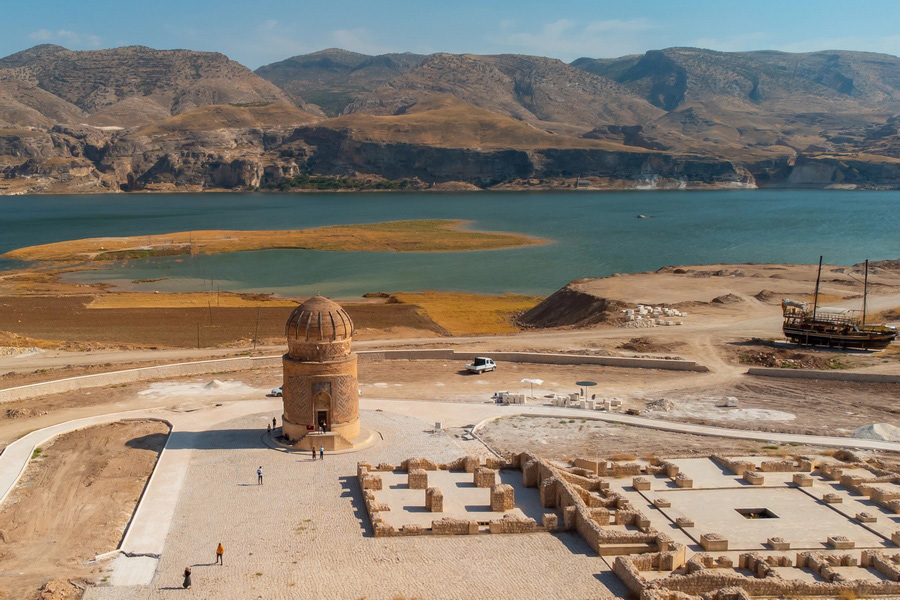
Southeastern Anatolia Region tours are a perfect journey through time among its archaeological landmarks, religious heritage, and local traditions. Göbeklitepe and Karahan Tepe (Karahantepe) in Şanlıurfa are the earliest known temples in human history and continue with the biblical-era city of Harran. Adıyaman’s Mount Nemrut (Nemrut Dağı), known for its massive stone heads and royal tomb-sanctuary, and the ancient city of Perrhe (Perre) are key destinations for Southeastern Anatolian tourism. Mardin Province, known as the door of Mesopotamia, spotlights the Mor Gabriel Monastery (Mor Gabriel Manastırı) near Midyat, traditional Syriac villages like the Gülgöze neighbourhood in Midyat, and centuries-old religious schools such as the Red Madrasah of Cizre (Kırmızı Medrese) in Şırnak.
The Southeastern Anatolia Region travel guide includes the fortress of Rumkale (Urumgala), and the twin rivers of Mesopotamia, the Euphrates and Tigris, emphasising their importance in the rise of early civilisations. In Batman, Hasankeyf preserves the Silk Road history, while Siirt Province’s Tumulus of Güzir Höyük and Türbe Höyük, as well as Başur Höyük in Diyarbakır Province and Çattepe Höyük in Batman Province, are some of the city's greatest archaeological finds.
No Southeastern Anatolia Region travel is complete without a culinary pilgrimage. Visitors sample Southeastern Anatolian cuisine such as isot-spiced lahmacun in Şanlıurfa, çiğköfte in Adıyaman and büryan kebab in Siirt. Gastronomic stops in Gaziantep feature baklava made from local pistachios. Traditional Mırra coffee and almond sweets are served in Mardin Province. Southeastern Anatolia Region tours typically include short boat trips, guided walks in old city quarters and stops at major museums such as the Zeugma Mosaic Museum (Zeugma Mozaik Müzesi) in Gaziantep, which is also included in MuseumPass Turkey.
Most routes are multi-day and require local transportation between cities such as Şanlıurfa, Mardin, Diyarbakır, Adıyaman, and Batman. Accommodation ranges from boutique guesthouses in restored stone buildings to standard hotels in urban centres.
Best Time to Visit the Southeastern Anatolia Region
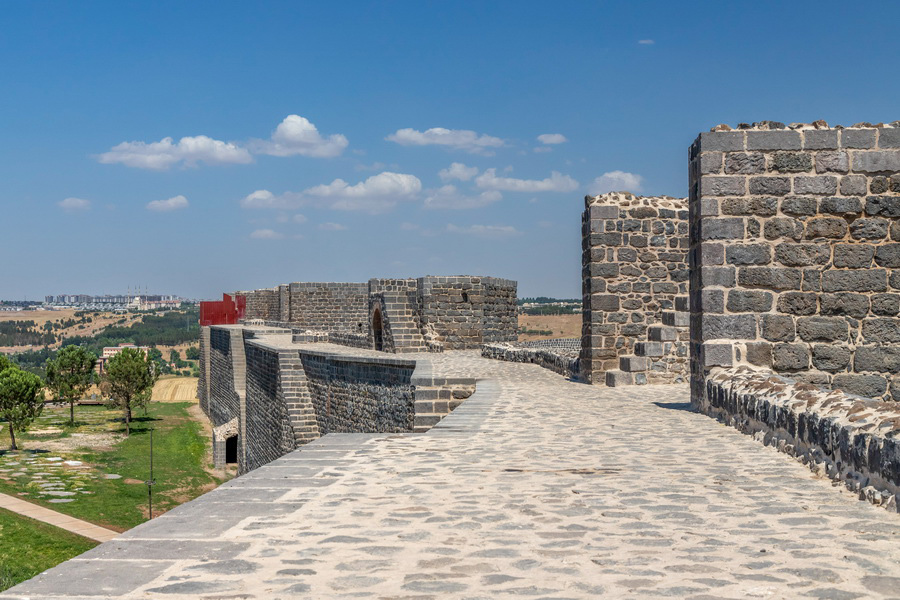
The best time to visit the Southeastern Anatolia Region is in spring (April to June) and autumn (September to November), when flight prices are the most affordable. These months have the finest daytime temperatures, averaging between 21°C (69.8°F) and 26°C (78.8°F), with low humidity and minimal rainfall. Cities like Gaziantep and Diyarbakır are ideal for exploring during this time, as visitors can comfortably tour open-air museums, historical fortresses, and archaeological zones without the risks posed by summer heat. In addition to the weather, this period coincides with regional cultural events and harvest-related markets, which enhance the experience for those interested in the Southeastern Anatolian culture and gastronomy. Travellers seeking to explore Mesopotamian historical sites, Southeastern Anatolian local customs, or enjoy Southeastern Anatolian food will find these seasons optimal.
Summer in the Southeastern Anatolia Region is characterised by intense heat, with average daytime temperatures exceeding 40°C (104°F) in areas such as Harran and Karadut. Rainfall is almost nonexistent, often under 3 mm throughout the entire month. While conditions are harsh, this season still attracts some visitors due to lower accommodation prices and quieter tourist traffic. Southeastern Turkey tours in summer are best suited for short, early-morning excursions and indoor activities.
Winter is relatively mild compared to other regions in Turkey, with average daytime temperatures hovering around 9°C (48.2°F) in January. Besides some rainfall, it remains infrequent. Winter allows for uninterrupted access to key Southeastern Anatolian attractions, including the UNESCO-listed Diyarbakır Fortress and İçkale, and supports exploring Southeastern Anatolian history in uncrowded conditions.
Uncover the Charms of the 9 Provinces of the Southeastern Anatolia Region
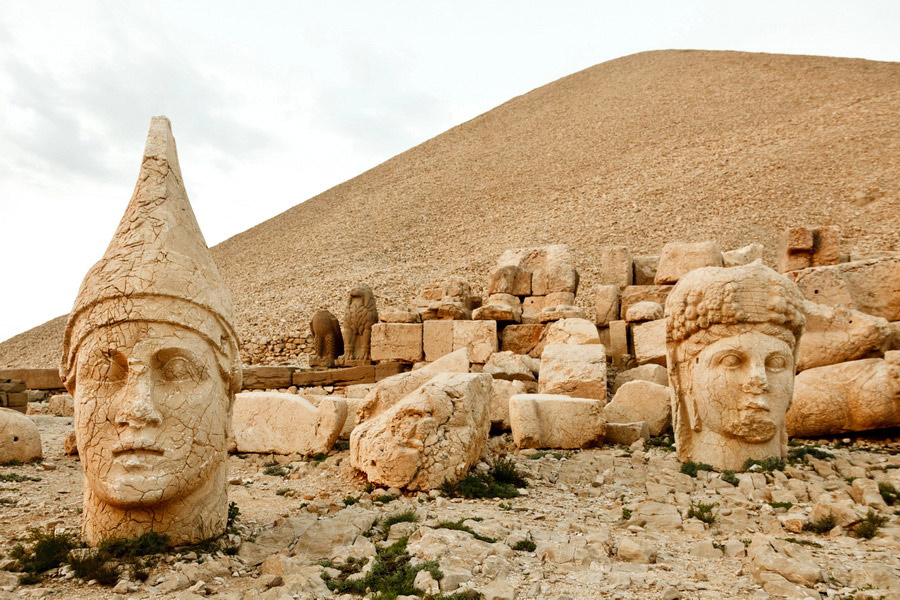
Deployed between the Tigris and Euphrates rivers, the Southeastern Anatolia Region has developed agriculture, writing systems and early urban settlements.
In Şanlıurfa, archaeological discoveries such as Göbekli Tepe, which dates back to the 10th millennium BC, show the earliest signs of organised religious buildings. Diyarbakır’s fortified walls were first built by the Romans and later expanded by other empires. These walls are still among the best-preserved examples of military architecture in the world. Mardin, known for its terraced architecture and diverse languages, exemplifies the constant human settlement influenced by Assyrian, Kurdish, Arab and Armenian communities. Midyat and Nusaybin in Mardin Province have Syriac Orthodox monasteries and ancient inscriptions from the early Christian era.
Gaziantep has served as a trade and cultural centre since the Hittite period, maintaining its importance through Roman, Byzantine and Ottoman rule. It is also one of Turkey’s leading industrial cities today. Kilis, separated from Gaziantep in 1995, has a dense urban core with centuries of history that go back to Assyrian and Hellenistic settlements. Siirt is celebrated for its deep valleys and magnificent mountains. Şırnak, which borders Syria and Iraq, was made into a separate province in 1990. It has archaeological remains and social and political importance linked to cross-border Kurdish communities.
Adıyaman is known for Mount Nemrut, a UNESCO World Heritage Site with colossal statues from the Commagene Kingdom. The province brings together archaeological sites, including ancient cities like Arsemia. Batman, once a small village, grew quickly after oil discovery. The city is close to the ancient site of Hasankeyf, which has been largely submerged by the waters of the Ilısu Dam.
Explore the History of the Southeastern Anatolia Region
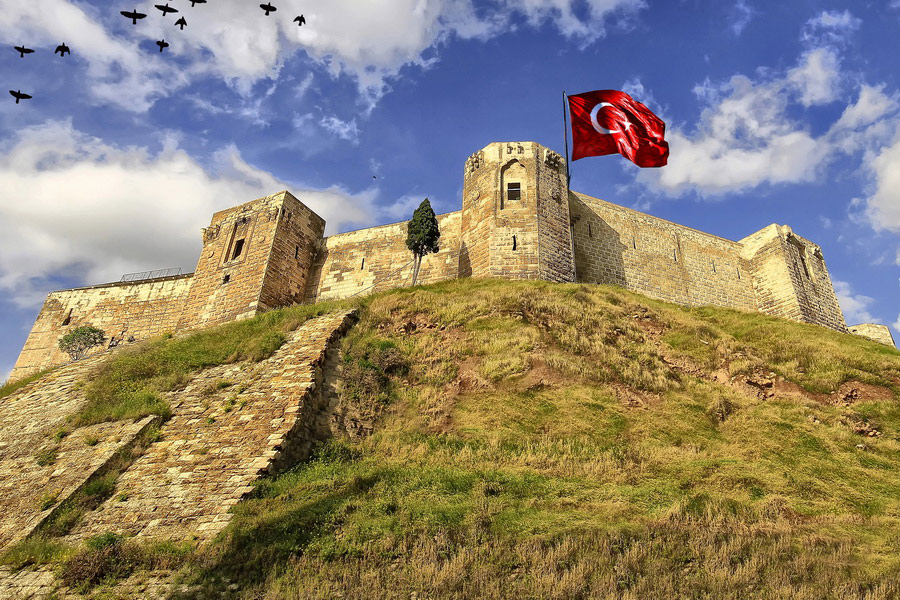
The Southeastern Anatolian history plays a key role in the narrative of the cradle of human civilisation. Archaeological finds, especially at Göbeklitepe, show that organised ritual activity began around 9600 BC. This is thousands of years before Stonehenge (built around 3000 BC) or the Egyptian pyramids (the earliest, the Pyramid of Djoser, dates to around 2670 BC), making it the oldest known temple complex in the world.
After the Neolithic period, Bronze Age cultures of the Hurrians and the Mitanni Kingdom left signs of city complexes and early governments. In the Iron Age, Urartian influence rose in the north, while Aramean states developed along the middle Euphrates. Assyrian power during this time also impacted the region’s politics and military structure.
With the arrival of the Achaemenid Empire in the 6th century BC, the Southeastern Anatolia Region became integrated into Persian administrative systems. After Alexander the Great's conquest, the Seleucid Empire dominated major settlements including Harran and Edessa (now Şanlıurfa). Under Roman and later Byzantine rule, Christianity spread throughout Upper Mesopotamia.
From the 7th century, Arab conquests brought the region under Umayyad and Abbasid control. The area later struggled between Armenian forces and the Byzantines and then became part of the Seljuk realm. The Artuqid dynasty managed significant architectural developments, especially in Diyarbakır and Hasankeyf.
The Ottoman Empire took control over the Southeastern Anatolia Region in the early 16th century, growing the region into an important administrative and commercial zone. Cities like Gaziantep, Mardin and Diyarbakır blossomed as centres of Anatolian historical sites and cultural exchange. In the modern era, the area changed a lot after World War I, the Turkish War of Independence and the founding of the Republic. The Southeastern Anatolia Project (GAP) (Güneydoğu Anadolu Projesi), which began in the late 20th century, greatly improved regional infrastructure, agriculture and urban development.
Plan your Dream Holidays in the Southeastern Anatolia Region
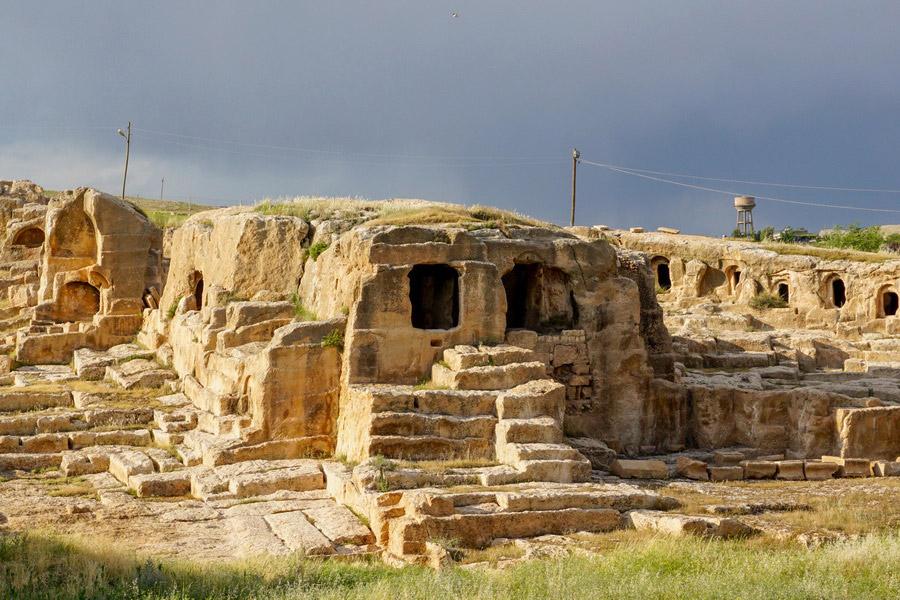
Southeastern Anatolian attractions such as Göbeklitepe, Mount Nemrut and ancient cities lead you to dream holidays including sacred sites, Mesopotamian heritage and living traditions in the earliest roots of human societies.
The World’s First Temples & Cities
The Southeastern Anatolia guide is the history of humanity's transition from survival to civilisation. Göbeklitepe, located 15 km from Şanlıurfa, is 6,000 years older than Stonehenge. Large T-shaped pillars arranged in circles suggest early gatherings for rituals before farming or pottery existed. Harran, which has been inhabited for more than 8,000 years, was a centre for Mesopotamian learning and worship of the moon god. It is believed that Abraham lived here. Zeugma, a Hellenistic-Roman city near Gaziantep, was known for its mosaics and trade along the Euphrates. Another delight for Southeastern Anatolian tourism is Dara, in Mardin, which was once a Roman fortress town and incorporates hidden cisterns and rock-cut tombs.
Sacred Southeastern Anatolian Geography & Pilgrimage Routes
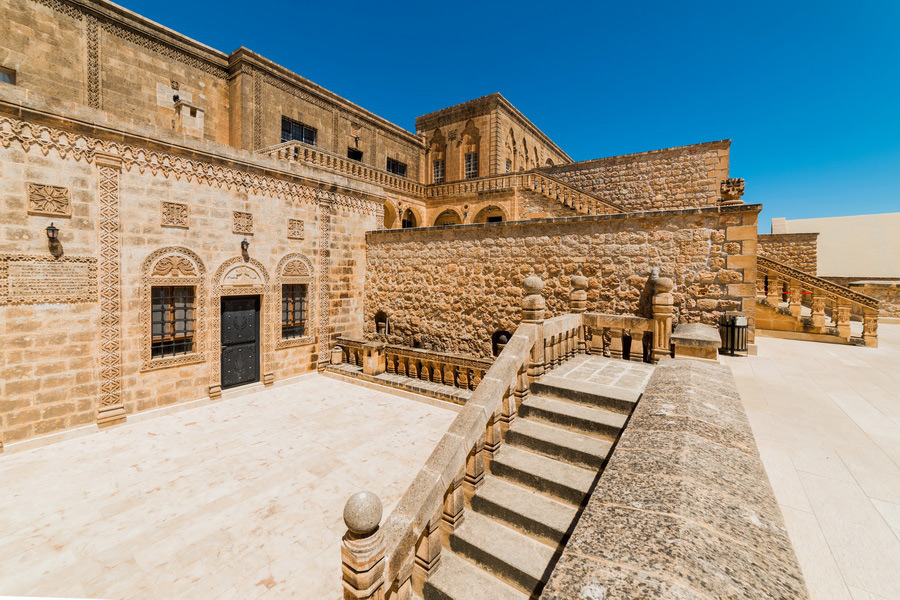
Sacred landscapes dominate the area with Mount Nemrut's sanctuary, built by Commagene King Antiochus I in the 1st century BCE, which features enormous stone heads of gods. In Şanlıurfa, Balıklıgöl (Pool of Abraham) is linked to the story of Abraham surviving a fire, where flames turned to water and wood became a sacred fish. Orthodox Syriac Mor Gabriel (Deyrulumur) and Mor Hananyo (Deyrülzafaran Manastırı) monasteries have been active since the 4th century, preserving the Aramaic liturgy. The Great Mosque of Diyarbakır (Diyarbakır Ulu Cami), once a church, connects four Islamic schools of thought under one roof. Nearby, the Prophet Süleyman Mosque (Hazreti Süleymaniye Camii) contains the tombs of early Muslim martyrs.
Nusaybin, a Kurdish-populated city in southeastern Turkey near the Syrian border, has ancient roots dating back to the Assyrian Empire and was a key Roman-Persian trade and military centre. Known historically as Nisibis, it was a major Christian theological heart with the renowned School of Nisibis founded around 350. The Church of Saint Jacob (Mor Yakup), built in the 4th century as a baptistery and later converted into a church, remains one of the oldest churches in the region, showcasing Late Roman and Byzantine architecture.
Mesopotamian Heritage & Living Traditions
From Çayönü to Halfeti, the Mesopotamian heritage is a vital aspect of the Southeastern Anatolian travel experience, as highlighted in our guide. The 5.8-kilometre-long black basalt walls of Diyarbakır encircle a city with diverse faiths and cultures. Ruins of Zerzevan Castle (Zerzevan Kalesi) in Mardin hold a Mithras Temple from late antiquity. River rafts known as kalak, made from goatskins, were used to transport goods down the Tigris River. Some are still rebuilt in Hasankeyf, a town with 12,000 years of human history that is now partially underwater. Euphrates boat tours showcase submerged mosques and fortresses and different ways to connect with time.
Architectural Marvels
The influence of the Artuqid and Ottoman eras can be seen in the stone architecture and engravings. Mardin’s yellow limestone buildings feature decorative designs from the 12th to 14th centuries, while the synagogue located in the city is one of Turkey's oldest, featuring stone arches and Hebrew inscriptions. Diyarbakır’s On gözlü Köprü and the Roman Severan Bridges (Cendere Köprüsü) near Adıyaman highlight remarkable engineering skills of ancient times. Şanlıurfa’s Grand Mosque (Ulu Cami) was built on the remains of a former Christian church. It shows the various and connected identities of the Southeastern Anatolian Region.
Off-the-Beaten-Track Adventures
Camping under the stars in the Harran Plain or exploring the banks of the Euphrates alongside local guides are the main activities undertaken during Southeastern Anatolia travel. The region’s raw, textured landscapes are filled with legends and rituals of moon gods, prophets and kings. Hasankeyf is an old town by the Tigris River in Batman, Turkey. It’s full of caves, stone houses and ancient carvings and has been protected since 1981. On the Euphrates River near Halfeti, you can take boat trips past sunken villages and the Rumkale fortress. These tours often include opportunities for birdwatching, exploring the history of Southeastern Anatolia, and tasting traditional local cuisine.
Marvel at Natural Wonders and Delight in Outdoor Activities
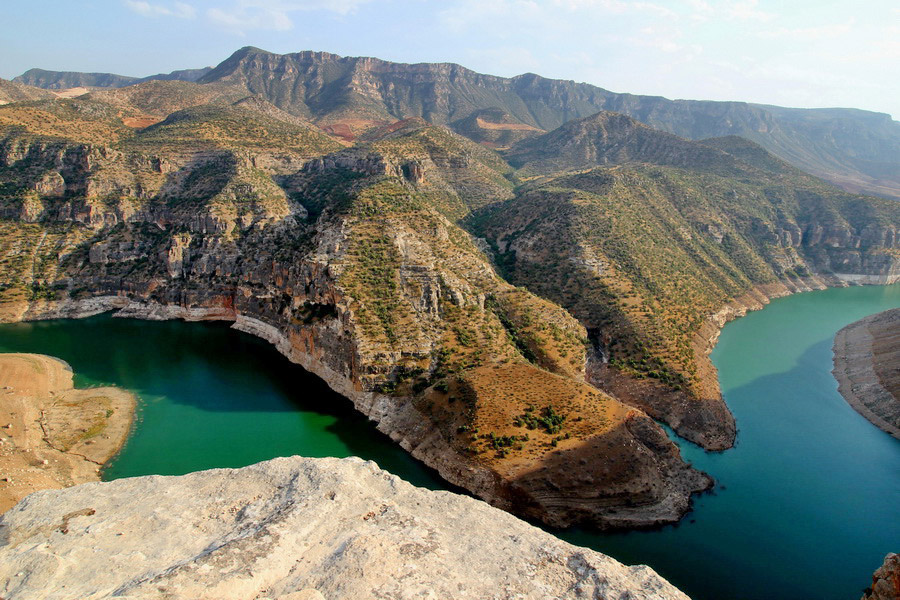
The Southeastern Anatolian attractions include some of the central points of human civilisation. Upper Mesopotamia, defined by its unique geography and ecological diversity, connects visitors to Southeastern Anatolia's natural wonders and the region's human development in a single setting.
Within the boundaries of Tek Tek Mountains National Park (Tek Tek Dağları Millî Parkı) in Şanlıurfa, you can find the ruins of Şuayip and Soğmatar, which hold great historical importance. Soğmatar served as a religious heart where people performed rituals for Sin, the Mesopotamian moon god. Assyrian inscriptions and tombs from the Roman era have been found here. The nearby Senem Cave (Senem mağarası) contains early Christian architectural remains. The park is also home to rich biodiversity with 272 plant species and 172 animal species. These include gazelles, rabbits and various steppe birds such as bustards and storks.
Botan Valley National Park (Botan Vadisi Millî Parkı) in Siirt, established in 2019, is an important landscape along the Botan River and one of the major national parks in Southeastern Turkey. It is used for activities such as rafting and paragliding. The valley also has archaeological value, with human settlement on its cliffs and riverbanks going back thousands of years. Rasil Hacar Hill provides views of the valley’s striking landscape, which shaped ancient trade and migration routes.
The Takoran Valley (Takoran Vadisi), formed by the Euphrates River in Adıyaman Province, stretches for roughly 20 kilometres. This area is characterised by canyon walls, rock tombs, waterfalls, and old bridges. It hosts activities like trekking, canoeing and camping. However, its geological formation and favourable location have influenced settlements and farming since ancient times. Agricultural practices in the area still rely on Euphrates irrigation, continuing a tradition that dates back to the early Neolithic period.
In Şanlıurfa Province, the steppe and semi-desert ecosystems of the Tektek Mountains (Tektek Dağları) and Kızılkuyu, as well as the Karaca Dağ near Diyarbakır, are home to wild relatives of cultivated plants. This is particularly significant because the Southeastern Anatolia Region contains part of the Fertile Crescent, where people first domesticated wheat, barley, and legumes. In nearby Birecik, breeding programmes protect the critically endangered northern bald ibis by imitating natural reproductive cycles and tracking migration.
Green Escapes: Ecoregions and Sustainable Destinations
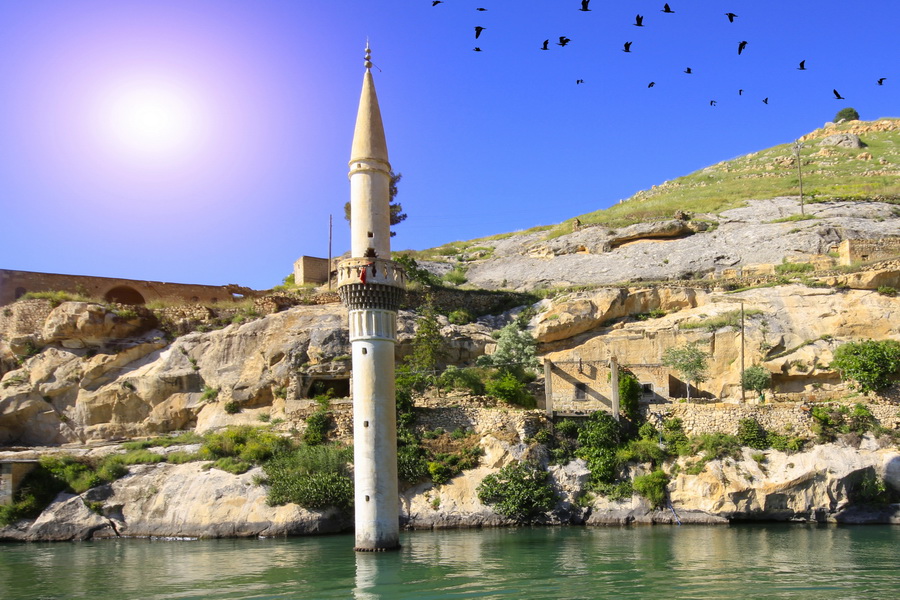
The region is where early civilisations matured, creating a landscape full of historical and natural wonders that attract tourism in Southeastern Anatolia. Turkish Mesopotamia includes different ecoregions, such as the Eastern Anatolian deciduous forests (Doğu Anadolu yaprak döken ormanları), the Zagros Mountains forest steppe, and the Eastern Mediterranean conifer-sclerophyllous-broadleaf forests (Doğu Akdeniz kozalaklı-sklerofilik geniş yapraklı orman bölgesi). The temperate broadleaf and mixed forests have layered canopies of oak, beech and pine. In contrast, the Zagros Mountains (Zagros Dağları) are mainly covered by Persian oak woodlands and pistachio groves, which are home to unique species like the Persian leopard and Syrian brown bear.
Halfeti, a Cittaslow town in Şanlıurfa, showcases the area's mix of Southeastern Anatolia history and natural beauty with its partially underwater old town, famous for its black roses. The ancient landscapes bear witness to thousands of years of human settlement, expressing changes in urban life from the Late Chalcolithic Uruk Expansion to the Neo-Assyrian period. The Southeastern Anatolian geography, which includes the Euphrates River, the Taurus Mountains, and the Zagros Mountains, has created a rich variety of cultures and ecosystems.
Southeastern Anatolia's natural wonders are a key area for archaeological research because of its diverse environments and a rich history of human settlement. Researchers have used landscape methods to understand how communities changed over time. Long-term field surveys throughout the area have mapped changing settlement patterns influenced by shifts in climate, politics, and society.
Reconnect with Nature by Experiencing Farm Stays and Agrotourism
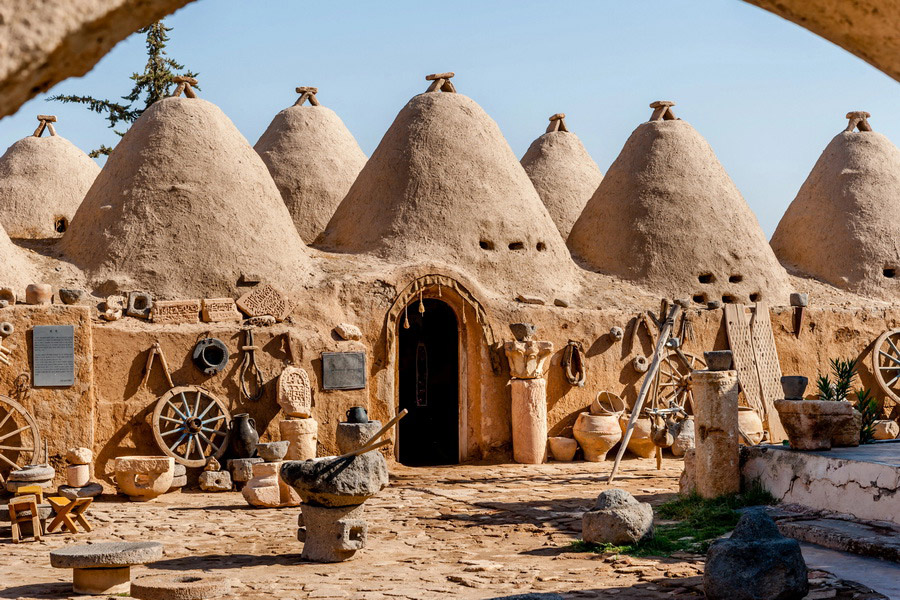
This Southeastern Anatolia Region guide couldn’t be complete without agrotourism due to its agricultural variety, distinct rural communities and local ecological projects. Southeastern Turkey tours are already famous chances for visitors to participate in farming activities through structured farm stays and short-term agrotourism programmes.
Farm stays in Southeastern Anatolia let visitors take part in the daily activities of farms that grow cotton, legumes, grains, pistachios, and vegetables. These are usually small- to midsize family-owned farms that play an important role in Turkey’s agricultural production. Şanlıurfa, for instance, produces nearly half of Turkey’s red lentils and is the country’s top pistachio producer, with over 100,000 hectares of orchards dedicated to pistachio cultivation. These farms also act as educational centres for sustainable practices like organic fertilisation, water conservation methods suitable for dry climates and traditional seed preservation.
Harvest-based tours are especially popular, with Gaziantep being one of the most desirable eco-experiences. From late summer to early autumn, travellers can work with locals using traditional tools and tractors to gather pistachios. They can also watch processing methods at drying and roasting facilities and buy directly from producers. These tours often include ecological spots like Halfeti’s Euphrates riverbank and Birecik’s endangered Bald Ibis Conservation Centre (Birecik Kelaynak Uretme Istasyonu).
Ecological tourism in the Southeastern Anatolia Region is connected to cultural heritage visits such as Harran’s beehive houses and various archaeological parks. This allows for a combined experience of rural life and ancient Southeastern Anatolia culture. Farm stays usually provide accommodation and meals in exchange for basic labour.
With more interest in sustainable travel, farm tourism in Southeastern Anatolia is set to become an important part of the wider tourism sector in the region. It connects local producers to global networks and fosters regional growth and environmental care.
Embrace Sustainable Shopping: Enjoy Eco-Friendly Finds
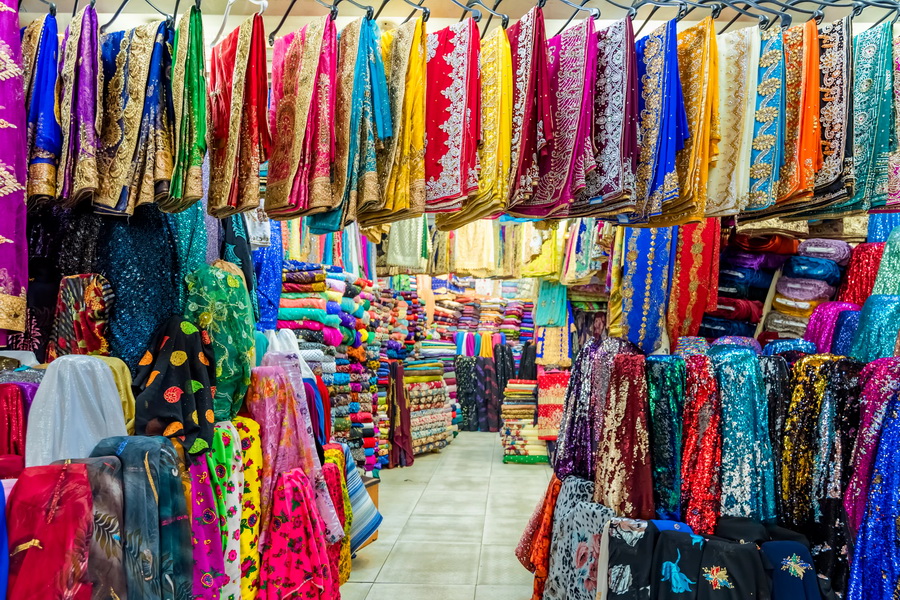
Southeastern Anatolia shopping experiences promote sustainability by preserving traditional crafts, supporting local production and maintaining age-old marketplaces. In Şanlıurfa, Coppersmiths' Market, Gümrük Inn and Kazaz (Bedesten) have both commercial and cultural roles. Situated in the historic centre near Balıklıgöl, these southeastern Turkey bazaars keep Ottoman-era architectural attributes and operate as active engines of the economy. The production and sale of local goods, including handwoven rugs, copper-engraved utensils and men’s headscarves made with small weaving looms called cülha, continue unabated without reliance on large-scale manufacturing. Rızvaniye Külliye houses working artisan workshops that create copperware, jewellery, traditional felt ware, leather goods, and niello-decorated ornaments.
In Diyarbakır, handmade souvenirs draw from the city's long-standing cultural identity. Local markets sell telkari (silver filigree) jewellery, copper-engraved coffee sets and garnet stone decorations. The use of regional agricultural goods such as Karacadağ rice, isot pepper (Urfa biber) and mulberry molasses enhances the city’s sustainable economy.
Mardin keeps the tradition of making soap alive with bıttım soap, which comes from wild pistachio oil. Filigree jewellery and handmade copper goods from Mardin’s Gümüşçüler Çarşısı and Bakırcılar Çarşısı bazaars depend on skilled craftsmen instead of machines. The reopening of the 400-year-old Assyrian bazaar in Mardin's Dargeçit district (Dargeçit Tarihi Çarşı), after restoration, ensures that local handicrafters and merchants can work in a setting that combines preservation with modern convenience and tremendous Southeastern Anatolian culture.
Gaziantep has an assortment of locally made merchandise, including Antep pistachios, traditional baklava and silk chilli spices. Shops in Bakırcılar Bazaar and Zincirli Bedesten focus on hand-hammered copperware, woven rugs and Yemeni leather shoes.
A Taste of Tradition: Sample Regional Food of the Southeastern Anatolia Region

Southeastern Anatolian food is framed by centuries of cultural exchange, the Ottoman legacy and its historical ties to Mesopotamian agriculture.
Gaziantep, the food capital of Turkey, is famous for katmer, a flaky sweet pastry traditionally served for breakfast or as a special dish for newlyweds. Another iconic dish is Gaziantep baklavası, a dessert made with paper-thin dough, butter and the region’s precious pistachios.
Meat dishes play a big role in Southeastern Anatolian cuisine, with Alinazik kebab featuring smoky aubergine purée topped with tender lamb cooked in tomatoes and spices. For breakfast, locals in Gaziantep enjoy Beyran çorbası, a spicy lamb and rice soup. Another favourite is çiğ köfte, a bulgur-based raw meatball dish from Şanlıurfa, which is a common meze.
Lentils and grains are also important, as shown by ezogelin çorbası, a red lentil and bulgur soup with mint, and yuvarlama çorbası, which originated from Gaziantep, is a complex meatball and chickpea soup served during Ramadan. Street food options include nohut dürümü, a chickpea wrap with sumac and peppers, and ciğer kebabı, skewered grilled liver popular in Diyarbakır and Şanlıurfa. Unique to Gaziantep is şiveydiz, a spring yoghurt soup made with lamb and green garlic.
Syriac wine, one of the world’s oldest wines, originates from Mesopotamia’s Tur Abdin region. Naturally fermented without additives, it reflects a 7,000-year Assyrian winemaking tradition. Made from local grapes like Vitis vinifera and Boğazkere, it comes in various types – red, white, and rosé – and pairs well with many dishes. Still produced in Mardin’s Midyat district, it offers a deep cultural and historical taste of Mesopotamia.
The culinary variety of Southeastern Anatolia includes Diyarbakır’s meftune, which is a spiced braised lamb, and pıçık, a dish of bulgur with garlic yoghurt. Mardin is known for kaburga dolması, stuffed lamb ribs, while Adıyaman features different versions of çiğ köfte. The cuisine of Southeastern Anatolia also highlights dishes infused with isot pepper, like Urfa kebab. Siirt is famous for büryan kebabı, which is pit-roasted lamb. In Batman one can taste perde pilavı, rice-stuffed pastry, and Kilis is recognised for oruk kebab, which consists of bulgur-meat patties. Şırnak’s savoury delights are hekeheşandi, a dish with meat-topped rice, and mumbar, which is a type of mutton sausage stuffed into an intestine casing.
Enjoy the Cross-Cultural Local Festivals of Southeastern Anatolia
Southeastern Anatolian festivals showcase the region's time-honoured art, culture and Southeastern Anatolian food. In Gaziantep, one of the most active cities in the area, festivals cover everything from traditional arts to modern competitions. The International Gaziantep Opera and Ballet Festival (Uluslararası Gaziantep Opera ve Bale Festivali) is a key event organised by the State Opera and Ballet, attracting famous artists and orchestras every year. Jazz on Campus and the Gaziantep Music Festival, both hosted by Gaziantep University, provide more cultural experiences with live performances from musicians around the world.
The International Zeugma Film Festival (Gaziantep Uluslararası Zeugma Film Festivali) screens acclaimed films from Turkey, Europe, and the Middle East and hosts talks with filmmakers and their teams. Other events, like the International Migration Film Festival and the Golden Baklava Film Academy International Student Film Festival, focus on themes of displacement and youth cinema. The Antep Short Film Days promotes local filmmakers, while the Gaziantep International Poetry Festival brings together poets for multilingual performances and music. Gazişehir Theatre Days (Gazişehir Tiyatro Festivali) supports alternative theatre and offers workshops for young actors in the area.
Gaziantep’s annual GastroAntep Culture Route Festival (GastroAntep Kültür Yolu Festivali) in September showcases the area's culinary traditions through panels, workshops and cooking classes led by Michelin-starred chefs. Other Southeastern Anatolian food events include the Islahiye Grape, Pepper and Culture Festival (İslahiye Üzüm, Biber ve Kültür Festivali) and the Oğuzeli Pomegranate Festival (Oğuzeli’nde Nar ve Kurutmalık festivali), both promoting Southeastern Anatolian agricultural products.
Şanlıurfa accommodates its own high-profile events, such as the International Göbeklitepe Short Film Festival (Uluslararası Göbeklitepe Kısa Film Festivali), which supports Turkish cinema and highlights the area's historical importance. The Şanlıurfa Delight and İsot Festival (Şanlıurfa Lezzetleri ve İsot Festivali) focuses on local dishes, especially çiğ köfte, with food stalls, cooking contests, music nights, and exhibitions about Göbeklitepe. The city’s enriched musical tradition is evident in many cultural events, influenced by its 12,000-year history and its position as a crossroads for civilisations and religions.
How to Reach the Timeless Southeastern Anatolia Region
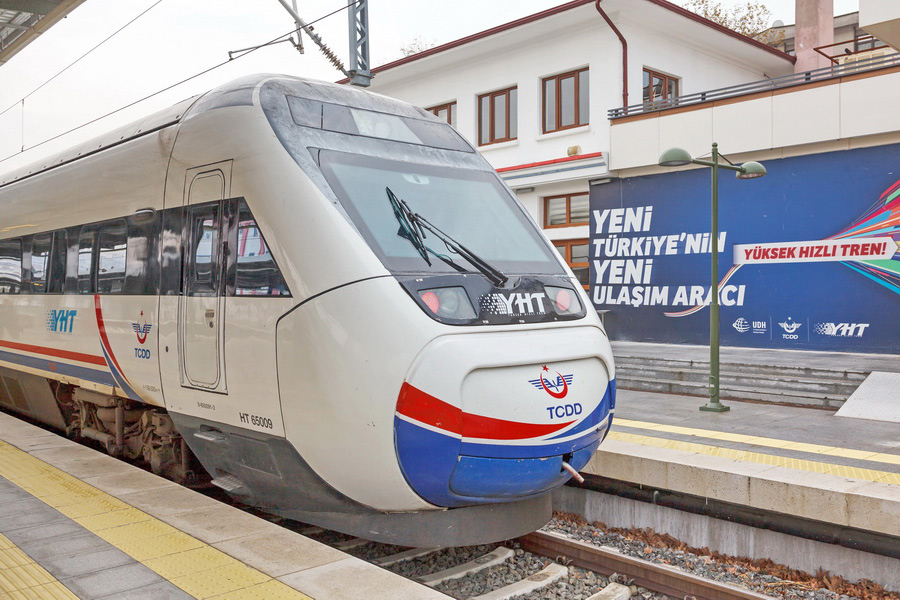
The most convenient way to explore Upper Mesopotamia is by booking flights to the Southeastern Anatolia Region, though the region is additionally accessible by bus, train and private car. Despite being geographically remote from western Turkey, its urban centres remain well-connected through a combination of regional transport networks and long-distance services.
By Air
Main airports: Gaziantep Oğuzeli Airport (GZT), Şanlıurfa GAP Airport (GNY), Diyarbakır Airport (DIY), Mardin Airport (MQM), Batman Airport (BAL), and Siirt Airport (SXZ).
Flights to Southeastern Anatolia are the best way to get to the region. Turkish Airlines, Pegasus Airlines and AnadoluJet provide daily flights from Istanbul, Ankara, and Izmir to regional centres. Gaziantep, Şanlıurfa, and Diyarbakır are the busiest airports and serve as entry points to major Southeastern Anatolian attractions, archaeological sites, and cultural landmarks. These airports have basic facilities such as rental car agencies and private shuttles to help passengers reach city centres and nearby areas.
By Train
Trains in the Southeastern Anatolia Region are limited but operational. The Güney Kurtalan Express (Güney Kurtalan Ekspresi), also known as the Southern Express train, connects Ankara to Diyarbakır, Batman, and Kurtalan five times a week. The trip takes between 24 and more than 27 hours. This is the only major passenger train running in the area. The former Taurus Express (Toros Ekspresi) train service between Gaziantep and Istanbul has been on hold since 2008. Gaziantep’s weekly international rail link to Mosul, Iraq, via Syria, is also on hold until further notice. Currently, no other cross-border train services are available.
By Bus
Our Southeastern Anatolia travel guide would not be complete without mentioning the extensive network of intercity buses. Long-distance coaches run daily from Istanbul, Ankara, Izmir and other western cities to destinations like Gaziantep, Şanlıurfa, Mardin, Diyarbakır, Batman and Adıyaman. The buses are of high quality, although arrival times can vary. They are a dependable part of the Southeastern Anatolia tourism system. In more remote areas, particularly around Hakkari, Şırnak and Beytüşşebap, minibuses (dolmuş) and shared taxis take the place of regular bus service.
By Car
Driving into the Southeastern Anatolia Region is a delightful experience through national highways and regional roads. Gaziantep connects to the western provinces via a modern motorway, Otoyol 52. Roads from the north and east differ in condition. Road trips grant access to lesser-known Anatolian historical sites and travel routes across Upper Mesopotamia.
Key Travel Routes and Information
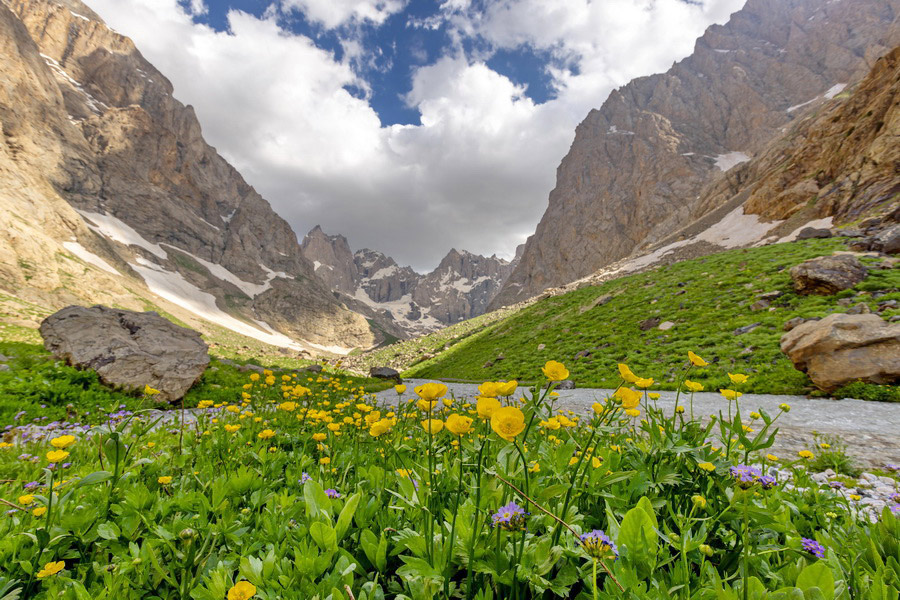
- Istanbul to Gaziantep: 1.5 hours by flight or 14 to 16 hours by bus.
- Ankara to Diyarbakır: 1.5 hours by flight or 24 to more than 27 hours by Güney Kurtalan Express train.
- Izmir to Urfa: 1.5 hours by flight; there is no direct rail option.
- Gaziantep to Mardin: 5 hours by car via Nizip and Viranşehir.
- Diyarbakır to Hakkari: 8 to 10 hours by car, depending on local road conditions.
Southeastern Turkey’s access routes are improving, thanks to the growing interest in Southeastern Anatolian culture, local customs, food, and history. Exploring archaeological sites or joining tours in Turkish Mesopotamia requires careful route planning due to limited rail coverage and unpredictable road conditions.


